What’s It Wednesday: The Niotus Club
A short-lived, but lively, sporting club along the banks of the Shawsheen River brought the community together.
Welcome or welcome back to History Buzz! If you’re a subscriber to the Buzz, thank you! If you’re new here, or you haven’t become a subscriber yet, please sign up for a subscription to have History Buzz delivered directly to your inbox. If you can, please consider a paid subscription to help support the research and writing that makes History Buzz possible.
On April 6, 1888, the Andover Townsman announced the creation of a new Athletic Association. The founding group met in the Town Hall to set up the by-laws, constitution, and committees.
A committee of major importance would be the one to . . .
. . . have the care of fitting up the field which has been hired from Mr. M.T. Stevens situated on Railroad Street, for base-ball grounds, tennis, and other outdoor sports. A suitable club house will be built and the out look is very flattering for a first class athletic club.” (Andover Townsman, April 6, 188)
In this detail from an 1888 map, the area where the Niotus Club grounds would be is circled. This is where Tyer Rubber Factory would later build two mill buildings, now Whole Foods Market and the Andover Commons apartments. Also noted here is the original location of the Free Christian Church on Railroad Street before the building was dismantled in 1908 and the new church built on Elm Street. You can see the millpond upstream of the Marland Woolen Mills. For another landmark, today the main branch of the U.S. Post Office is just after the bend in the road past the mill.
Throughout April 1888, the Athletic Association continued its plans. Local builder George S. Cole was contracted to build “a neat and convenient club house.” A number of club members had started practicing “for a base-ball nine.”
In the 19th century, a club was the group or association from which a team of nine were chosen hence the “base ball nine.”1
The “First Nine” would be the best nine players of a club. The “Second Nine” were the next best, although not always nine in number depending on the size of the club. The “Muffin Nine” were the least skilled players.
The “Muffin Nine” and “Muffin Games” became an important part of baseball clubs in the 19th and early 20th century. The Muffin Nine could make “no claim to athletic prowess”2 and were known for the amount of “muffing around” – a 19th century term, “to drop or mishandle the ball, a catch, to play badly, to bungle” – that characterized the lack of fielding skills of the players.
The Andover Athletic Association, as it was known at the beginning, recruited young men ages 16 to 19 years old for their base ball nine.
By May 4, 1888, just a month after first forming, the club had been “. . . obliged to increase its membership limit, and it now numbers 43 members. The new association will be called the “Niotus Club.” (Andover Townsman, May 4, 1888)
“Niotus,” according to my Google searching, is Latin for “uninvited.” (My knowledge of Latin is limited to what I can Google, so if I’m incorrect in this, please be kind!) If that’s true, club members certainly had a sense of humor about their endeavors and mostly likely enjoyed the irony of wearing team shirts that proudly declared them to be “UNINVITED.”
On Memorial Day, May 31, 1888, the Niotus Club held a match between their club members and “the Seminary men.” About two hundred spectators were in attendance.
The game was “finally won by the Theologues 8 to 5.
The Theologues have several old college players who play none the poorer because of Andover hill influence, and they presented a strong nine, especially their in-field. This was the first time the Niotus Club have played their regular nine and with more practice together they will have a strong team.” (Andover Townsman, June 1, 1888)
Just a few months after forming, the Niotus Club grounds featured, “five Tennis courts, a base-ball diamond, a beautiful grove, and an attractive club-house.” (June 1, 1888)
On June 22, 1888, the Niotus Club hosted their first field day and the Townsman dutifully reported on the event.
Niotus Club Field Day – A more beautiful June day than that of the 18th could not be imagined, and it was a welcome assistant to the members of the Niotus Club in their in their work for the first field day.
Busy hands during the forenoon were at work on the club-house and grounds, and when the time came for the opening of sports at three o’clock in the afternoon, the grounds made a handsome sight.
Flags and bunting had been freely used on the club-house, and here and there over the smoothly mown lawn of about three acres were tents and awnings placed to produce the best effect. About three o’clock the Andover Brass Band to their station, and from then till ten in the evening discoursed excellent music. The first attraction of the afternoon was a ball game between Phillips and Niotus. The game resulted in victory for Phillips 7 to 3.
Ices, strawberries, cake, and lemonade were served by Tanner of Haverhill, and nothing seemed to be missing to give all a delightful time, and it was the universal verdict that the Niotus Club had inaugurated an enjoyable occasion in their first field day.
The following year, June 1889, the Niotus Club hosted their second annual field day. Although it rained until just before game time, players and spectators still turned out for a game between nines from the Lawrence Canoe Club and the Niotus Club.
That evening, the Boston Cadet Band played and “elaborate illuminations” of 500 lanterns entertained the 300 or so guests who came for the evening events. The band played from 7:00 until 9:30pm when the field day closed with fireworks. Spectators lined Railroad and North Main Streets to watch the fireworks.
The design of the Niotus Club in arranging such times is to be commended, in that they are not money making, but planned wholly to develop the summer social life and afford an opportunity for the enjoyment of summer sports. (Andover Townsman, June 21, 1889)
The high praise and enthusiasm for the club and its field days are all the more bittersweet because the club closed in 1895 when the club’s lease from the M.T. Stevens Co. was not renewed. Instead, a train track was to be laid across the field heading to a new coal dumping place for Marland Mills.
The next year, in June 1896, William F. Trulan bought the Niotus club house and moved it to 59 Essex Street in Abbot Village where it was used as a store.
Years later, in 1910-1913, the Townsman reported on the construction of the new Tyer Rubber plants where the old Niotus fields used to be.
Looking at the maps, you can see the original location of the Niotus Club house on Railroad Street. It looks to be right about where the Whole Foods Market is today.
Can you imagine the land instead being open down to the Shawsheen River?
The grounds and the people made a sight to be called gorgeous: Japanese lanterns had been added to the clubhouse and placed around the grounds, and the sight was worth seeing. But few of our people had an idea how attractive these grounds are. About two acres are covered with a pretty lawn, and extending along the edge of the lawn down to the river is a grove, through which are several winding paths very inviting and much enjoyed by the promenades. Many were the expressions of delight, and the club members received many congratulations on securing such pleasant grounds for their games and summer social times. (Andover Townsman June 22, 1888)
Today, as the Town of Andover turns its attention to a master plan for the Shawsheen River, perhaps we will again someday have open spaces along the river for games, gatherings, promenades, and community events.
How about you? Have you ever explored that section of the Shawsheen River, behind the Whole Foods building?
Or have you ever watched a vintage baseball game? In Massachusetts, you can sometimes catch games played by the Essex Baseball Club. The Vintage Baseball Club website is chockfull of information about early baseball.
Thanks for reading! And big round of thanks goes to Jim Batchelder for supplying much of the research on the Niotus Club for this post.
~Elaine
If you enjoyed this post, please considering becoming subscriber. Paid subscriptions help support the research and writing that makes History Buzz possible.
Vintage Base Ball Association






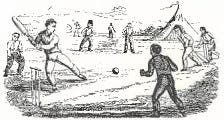
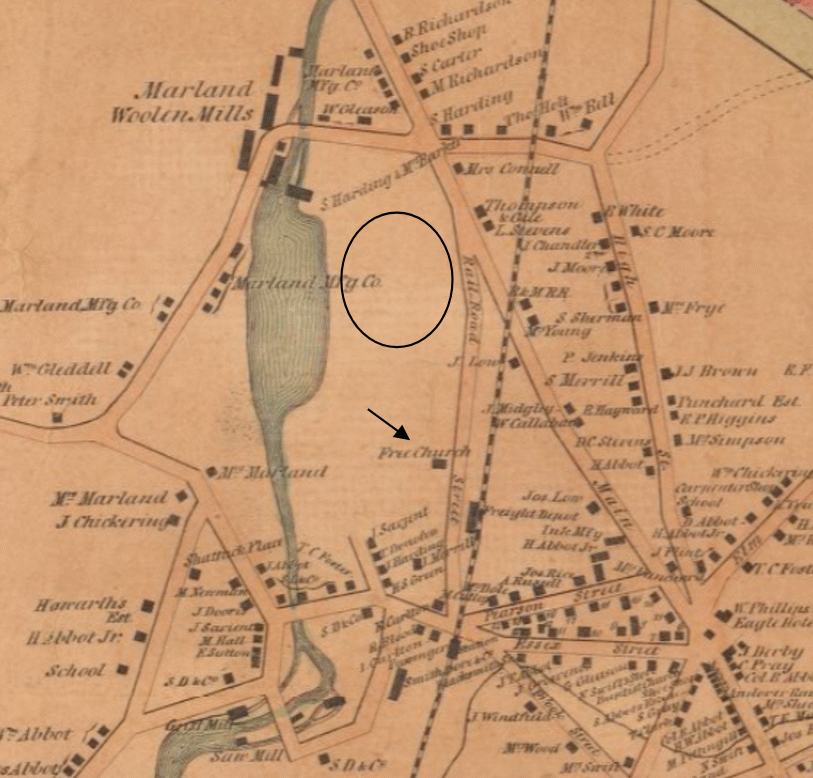
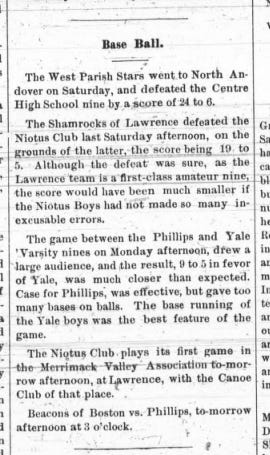
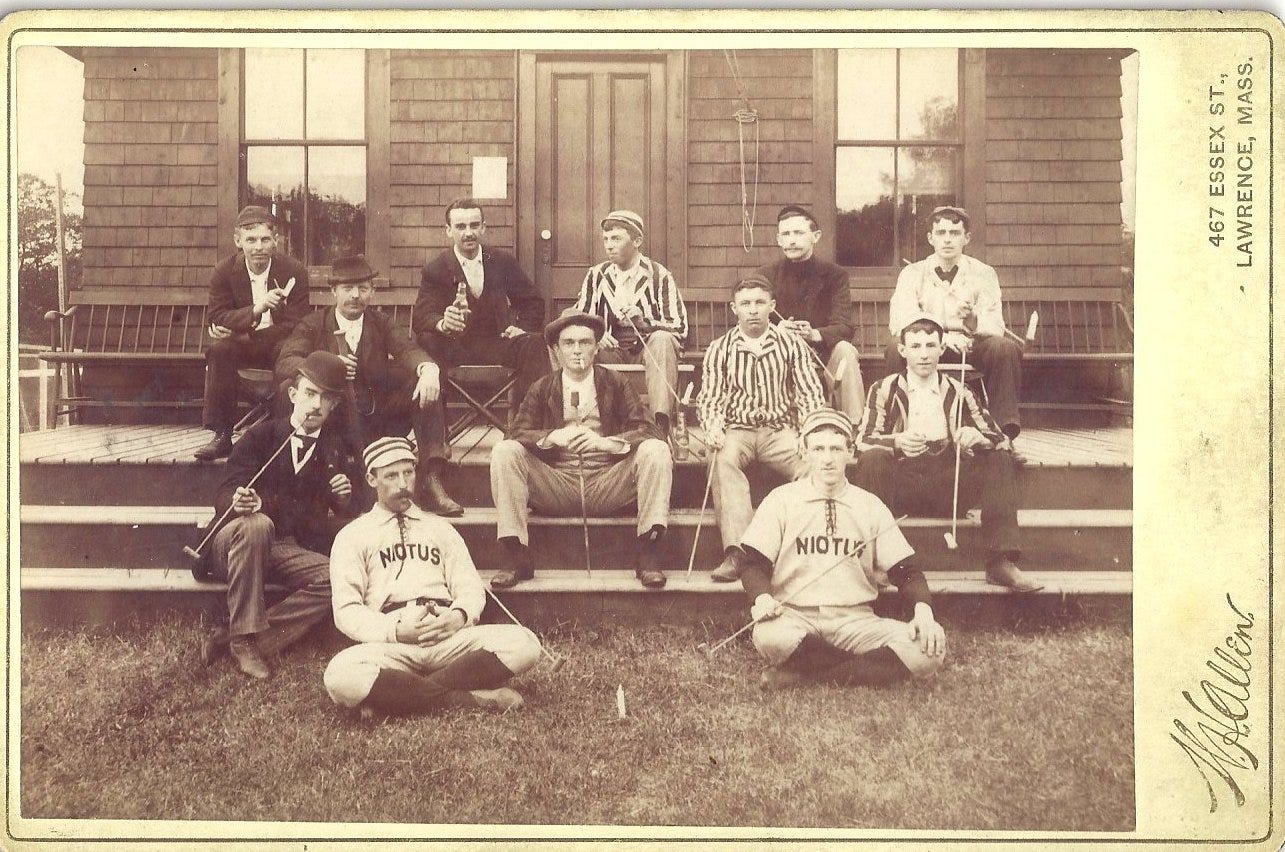
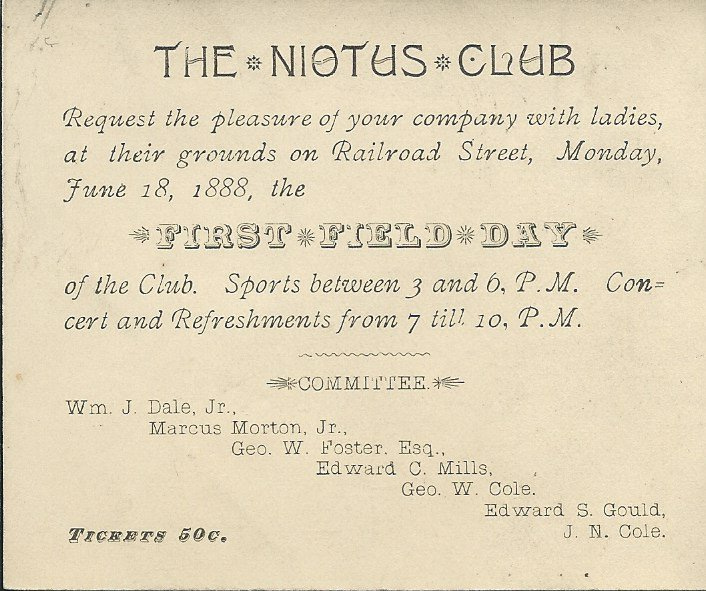
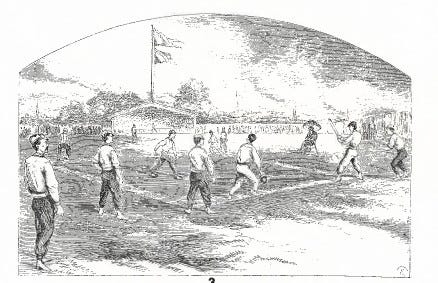
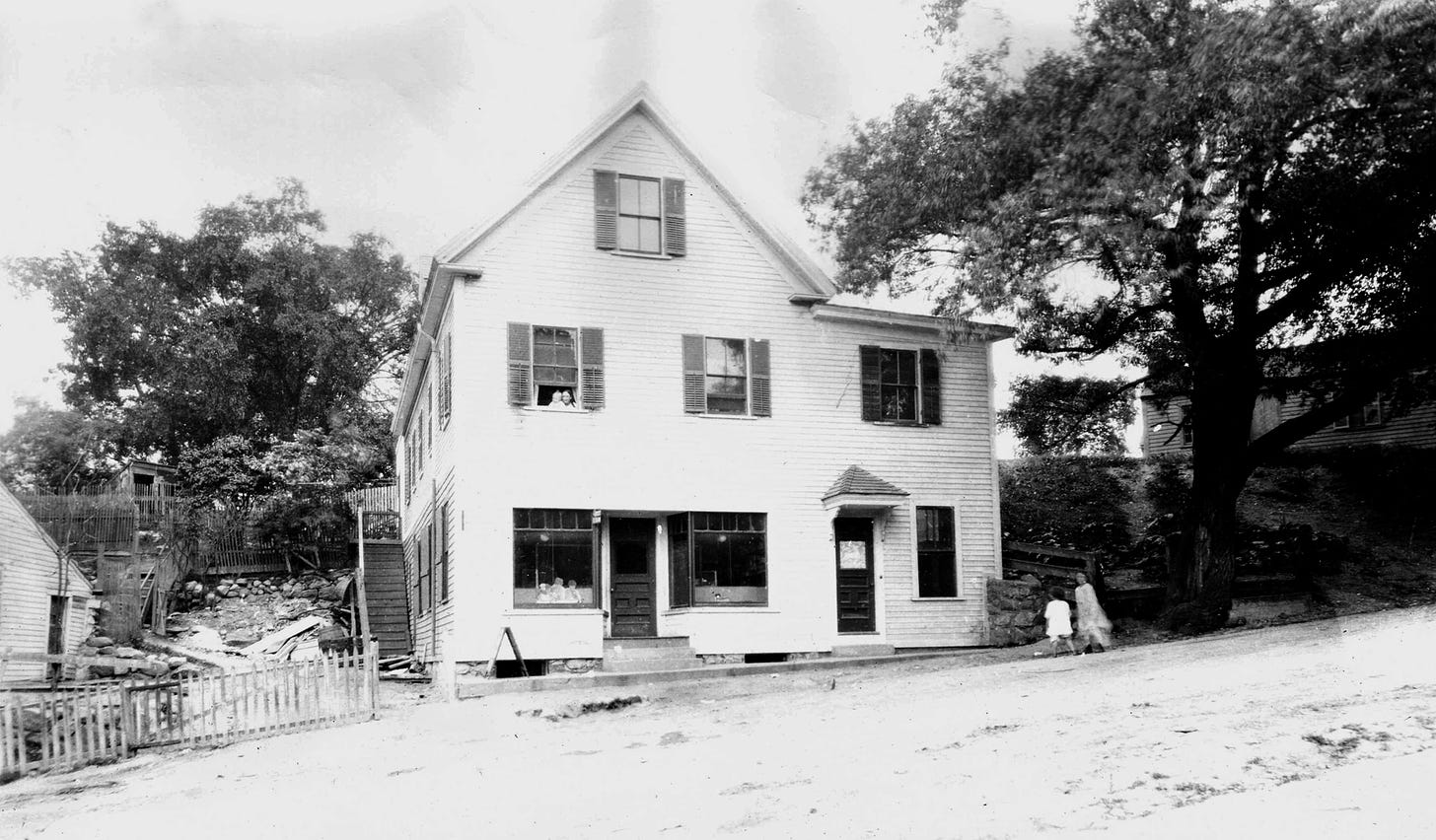
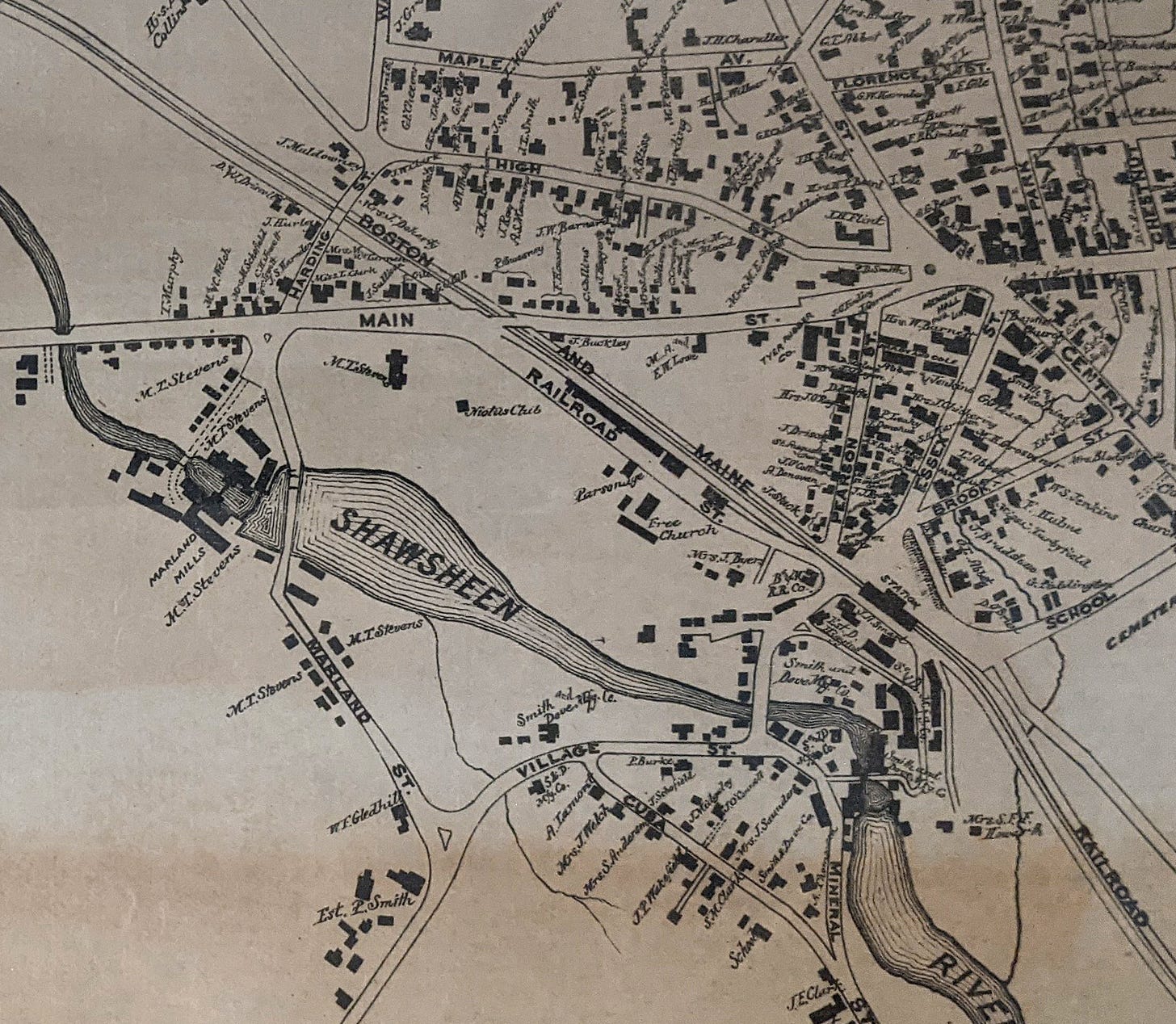
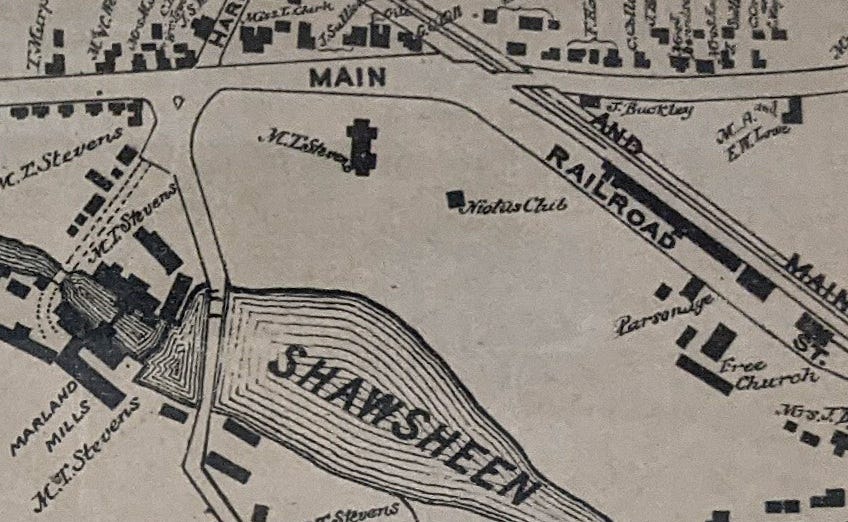

More open space near the Shawsheen would be a good thing. I've never looked behind whole foods.
I love the idea of revitalizing the Shawsheen to include a community meeting place!